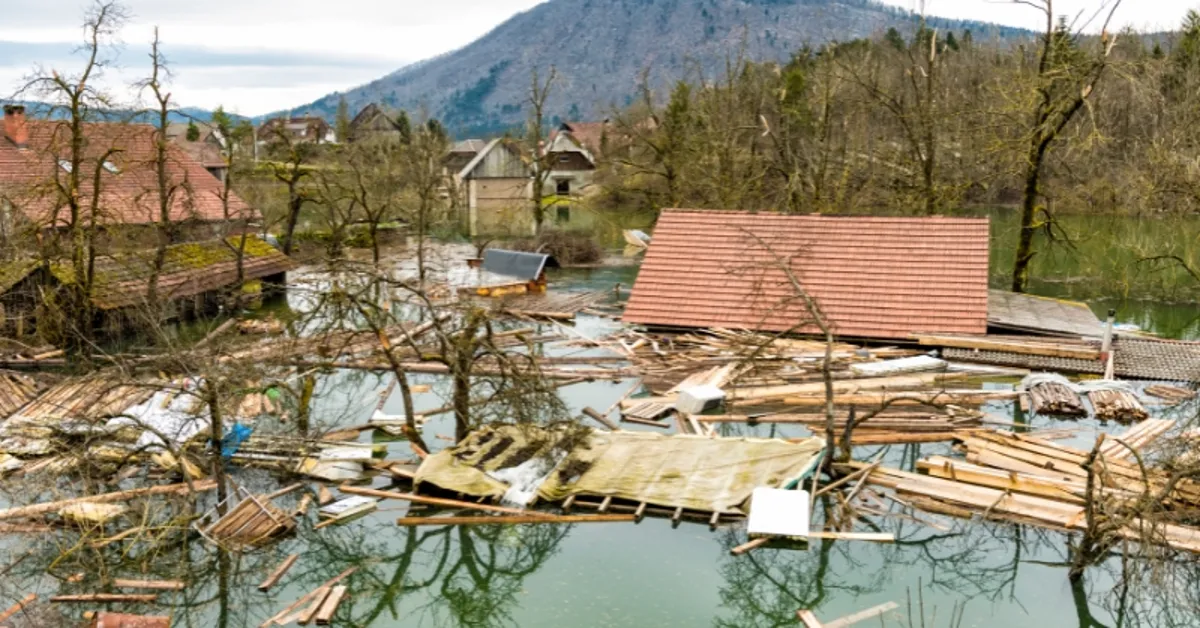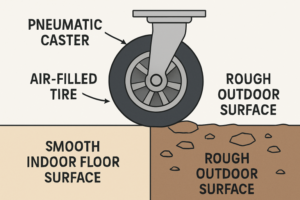Spring is often a time of renewal and growth, but for many homeowners in the Midwest, it also brings the risk of flooding. As the snow melts and heavy rains pour in, floodwaters can quickly become a serious threat to homes, infrastructure, and personal belongings. Spring flooding is particularly common in areas near rivers, streams, and low-lying regions, but even homes that seem far from water sources can be vulnerable. Understanding the risks and taking the necessary steps to protect your property can make all the difference in preventing costly damage.
In this article, we’ll outline key strategies to safeguard your home from the dangers of spring flooding and explain how fine restoration services can help mitigate the effects of water damage. Taking proactive measures before a flood strikes is the most effective way to protect your home and preserve its value.
Why Spring Flooding in the Midwest is a Growing Concern
In the Midwest, spring flooding is a recurring problem due to a combination of factors. As temperatures rise, melting snow adds significant amounts of water to the already saturated ground. In addition, the region experiences frequent heavy rainstorms during the spring months, which exacerbate the flooding potential. The flooding risks are particularly high along major rivers such as the Mississippi and Missouri, as well as in areas near smaller streams and creeks.
The Midwest’s unique geography also contributes to flood risks. Many areas are flat, with soil that struggles to absorb large volumes of water quickly. This makes it easy for floodwaters to spread across wide areas, affecting both urban and rural communities. Homes that are poorly prepared for flooding may experience devastating damage that can be costly and time-consuming to repair.
Protecting Your Home: Essential Steps Before Spring Flooding Strikes
Taking preventive measures is crucial when it comes to protecting your home from spring flooding. Here are some essential steps homeowners should consider before the floodwaters start to rise:
1. Assess Your Home’s Flood Risk
The first step in preparing your home for flooding is to assess how vulnerable it is to floodwaters. Consider your home’s location, its proximity to flood-prone areas, and whether it is situated in a designated flood zone. You can check local flood maps and review flood history in your area to gain a better understanding of your home’s flood risk.
If your home is in a flood zone, you may want to look into flood insurance, as typical homeowner’s insurance policies usually don’t cover flood damage. The National Flood Insurance Program (NFIP) offers flood coverage for homes in high-risk areas.
2. Elevate Critical Systems and Appliances
If your home is prone to flooding, consider elevating critical systems such as electrical panels, water heaters, and HVAC systems. These systems should be raised above the expected flood level to prevent water damage. In addition, elevating important appliances can minimize the risk of water infiltrating your home and causing long-term damage.
3. Install Sump Pumps and Backflow Valves
Sump pumps are essential tools for managing water during a flood. These pumps help to redirect excess water away from the foundation of your home. Ensure that your sump pump is in good working condition and equipped with a backup power source in case of electrical outages. Installing backflow valves in your home’s plumbing system can also help prevent sewage backup during heavy rains.
4. Seal and Waterproof Your Home’s Exterior
Sealing cracks and gaps in your home’s foundation and exterior walls is another crucial measure for flood protection. Check for any visible cracks or gaps around windows, doors, and the foundation. These should be sealed with high-quality caulk or specialized waterproof sealant to prevent water from seeping inside.
Additionally, you can apply a waterproof coating to the exterior of your home to create an extra layer of protection against rising water. While this may not entirely prevent flooding, it can significantly reduce the amount of water that enters your home.
5. Landscaping and Drainage Improvements
Improving the drainage around your home is one of the most effective ways to reduce flood risks. Ensure that the land slopes away from your foundation to direct water away from your home. This can be accomplished by adding or adjusting the grading around your property.
Install or clean out gutters and downspouts regularly to ensure that rainwater is directed away from your home’s foundation. Consider adding a French drain or surface drains to help manage water runoff during heavy rains. Proper landscaping can go a long way in preventing water from pooling near your home’s foundation.
Fine Restoration: Mitigating Flood Damage After the Storm
Even with extensive precautions, spring flooding can still cause significant damage to homes. If floodwaters have already entered your home, it’s important to act quickly and efficiently to prevent further damage and begin the restoration process. This is where fine restoration services come into play.
Fine restoration specialists are trained to handle water damage, mold growth, and other issues that can arise from flooding. They have the expertise, equipment, and knowledge to assess the extent of the damage and begin the cleanup process immediately. Water removal and drying should start as soon as possible to prevent mold growth and structural damage. Fine restoration professionals can also help with repairing and replacing damaged materials such as drywall, flooring, and insulation.
1. Water Extraction and Drying
Fine restoration experts use advanced tools like industrial-grade dehumidifiers and air movers to dry out affected areas. Water extraction is the first priority to prevent further damage to your property, and drying must continue until all moisture is removed. This process helps to minimize the risk of mold, which can quickly grow in damp environments.
2. Mold Remediation
If mold is allowed to grow in a flood-damaged home, it can lead to significant health hazards. Fine restoration services include mold remediation, which involves removing contaminated materials and cleaning the affected areas to ensure that mold spores do not spread throughout the home. By addressing mold growth early, you can prevent further structural damage and protect your family’s health.
3. Repairing and Rebuilding
Once the property is dried and any potential mold issues are handled, the fine restoration team will begin repairing and rebuilding the damaged areas. This may include replacing flooring, drywall, insulation, and repairing electrical systems. Fine restoration professionals ensure that the repairs meet local codes and safety standards to restore the integrity of your home.
Don’t Wait Until It’s Too Late: Act Now to Protect Your Home
Flooding may seem like a distant worry, but it is a real threat for homeowners in the Midwest, especially in the spring. The time to prepare is now, before the first signs of melting snow and rainstorms arrive. By following the preventive steps outlined above, you can reduce the risk of significant flooding damage to your home. And if disaster does strike, fine restoration services can help you recover and restore your property to its pre-flood condition. Take action today to ensure that your home is as safe and resilient as possible when the spring rains arrive.









